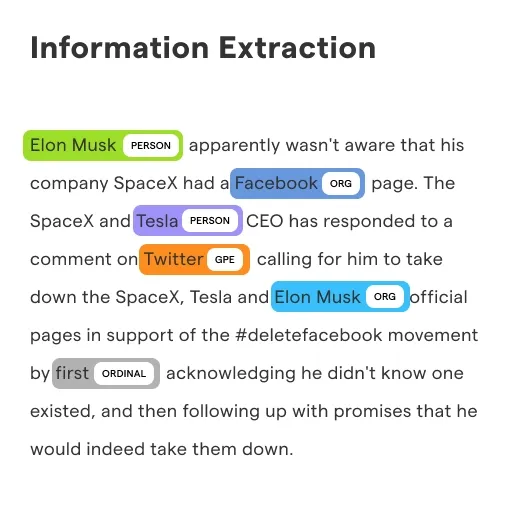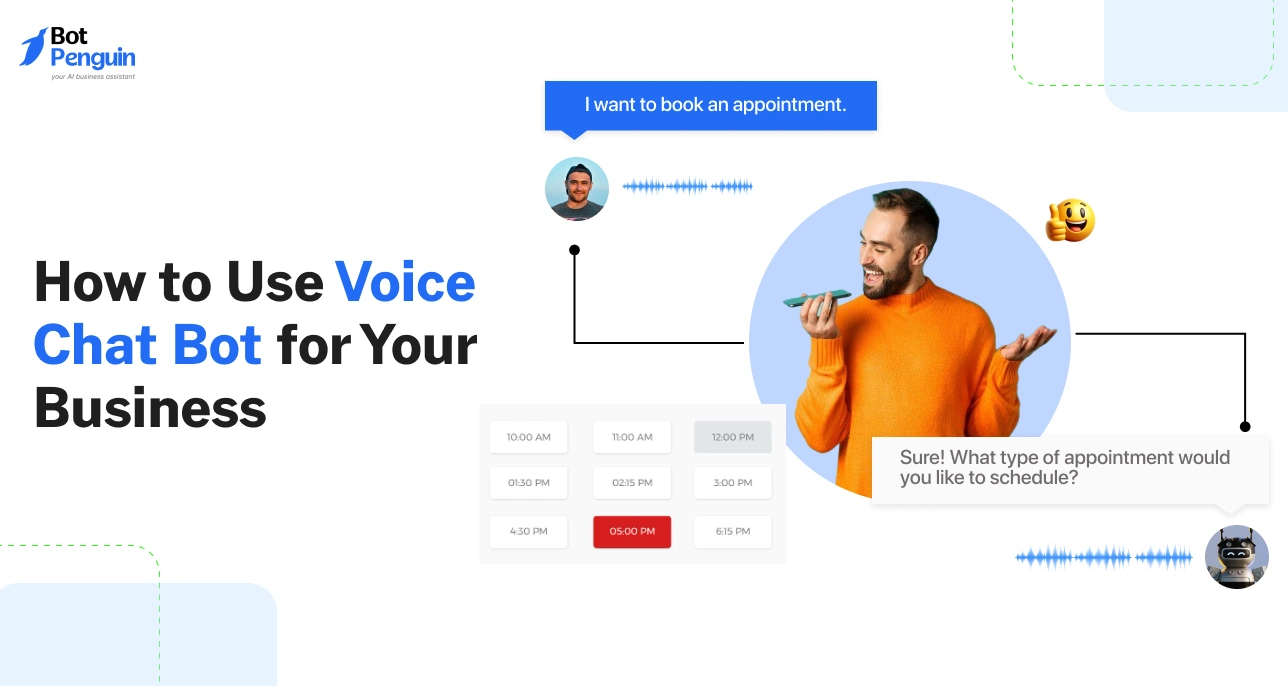What is Information Extraction in Big Data?
Information Extraction is a process of extracting and categorizing relevant information from unstructured and structured data sources.
The process involves identifying and analyzing patterns, relationships, and interactions between various data elements to create structured, meaningful information.
Why is Information Extraction an Important Concept?
In today's data-driven world, organizations have unprecedented access to vast amounts of data. However, this data typically exists in an unstructured format, making analysis and interpretation difficult. Following are the reasons why Information Extraction is important:
Handling Unstructured Data
Much of today's data is unstructured, such as text documents, emails, social media posts, and web pages. Information Extraction plays a crucial role in handling and making sense of this unstructured data. Businesses and organizations can unlock valuable insights and make data-driven decisions by automatically extracting and transforming unstructured data into structured information.
Extracting Relevant Information from Diverse Sources
With the proliferation of data sources, including internal databases, external websites, social media, and more, extracting relevant information can be a daunting task. Information extraction techniques help identify and extract key information from diverse sources, enabling businesses to gather and utilize the data that is most relevant to their specific needs efficiently.
Structuring and Summarizing Data
Unstructured data is often difficult to process and analyze. Information Extraction helps structure and summarize data, making it more manageable and easier to interpret. By extracting key concepts, relationships, and patterns, it enables businesses to gain a better understanding of the data and derive meaningful insights.
Enabling Content Management and Knowledge Discovery
By extracting information from various sources and structuring it into a unified format, Information Extraction supports effective content management. It allows businesses to organize and categorize their data, making it easier to search, retrieve, and manage information assets.
Moreover, by extracting and analyzing information across different sources, it enables knowledge discovery, revealing hidden patterns and trends that may provide strategic advantages to organizations.
How does Information Extraction work?
Information Extraction typically uses a combination of automated techniques and manual analysis to extract and interpret data.
Automated methods include natural language processing, machine learning algorithms, and data preprocessing techniques, while manual analysis involves human input to refine and verify results.
The extracted information is then standardized and transformed into structured data for further analysis and interpretation.
What are the Applications of Information Extraction?
Information Extraction has a wide range of practical applications across numerous industries, including healthcare, finance, media monitoring, and scientific research.
Business intelligence
Information Extraction plays a vital role in the field of business intelligence by extracting and analyzing data from various sources, such as enterprise systems, social media, and customer feedback.
By enabling businesses to intelligently extract and analyze data, Information Extraction aids in identifying emerging trends and patterns, forecasting future outcomes, and generating insights that can inform business strategies.
Financial investigation
Financial investigations often rely on analyzing large amounts of complex financial transactions. Information Extraction can help automate this process by extracting relevant data such as names, amounts, and transaction entities. By doing so, it facilitates efficient financial analysis and helps uncover fraudulent activities.
Scientific research
In scientific research, Information Extraction is crucial for processing and analyzing vast amounts of scientific literature and data. By extracting and standardizing relevant data from a variety of sources, Information Extraction enables researchers to discover new insights and trends in their field of study.
Media monitoring
In today's information-rich environment, monitoring news articles, social media, and other sources of media is essential. Information Extraction helps organizations keep track of their brand reputation, monitor competitor activity, and quickly identify trends or emerging challenges in the media.
Healthcare records management
The healthcare industry generates vast amounts of data every day, and managing this data is a critical challenge. By extracting relevant information from patient records and other sources, Information Extraction helps healthcare organizations to maintain their records easily, making it simpler to draw insights, and improve patient care.
Information Extraction Process
Here's a brief explanation of each step in the Information Extraction process:
Pre-processing of the Text
In this step, the raw text data is cleaned and transformed to prepare it for further analysis. This may involve removing irrelevant characters or punctuation, correcting spelling mistakes, normalizing text by converting it to lowercase, and removing stopwords (common words that do not carry much meaning).
Finding and Classifying Concepts
This step involves identifying and classifying relevant concepts or entities within the text. Entities can be people, organizations, locations, dates, or any other specific information that needs to be extracted. Natural language processing techniques, such as named entity recognition, are often used to identify and classify these concepts.
Connecting the Concepts
Once the concepts are identified, the next step is to understand their relationships with each other. This can involve determining which entities are connected or related to each other, and how they interact. This step may require analyzing the syntax and structure of the text to identify these relationships.
Unifying the Extracted Data
After identifying the concepts and their relationships, the next step is to organize and unify the extracted data into a structured format. This may involve creating a database or knowledge base where the information is stored and linked together for easier retrieval and analysis.
Getting Rid of the Noise
During the extraction process, there may be irrelevant or noisy information that is not useful for the intended purpose. This step involves filtering out this noise and focusing only on the relevant information. Techniques such as filtering based on specific criteria or using machine learning algorithms can be employed in this step.
Enriching the Knowledge Base
In this final step, additional knowledge or information can be added to enhance the extracted data. This can involve supplementing the extracted information with data from external sources or enriching it with additional attributes or context. This can help provide a more comprehensive and complete understanding of the extracted information.
Challenges in Information Extraction
While extracting information, one might face obstacles hindering the process of information extraction, which includes the following:
Large volumes of unstructured data
Handling and processing massive amounts of unstructured data is a challenge in Information Extraction. Robust techniques and scalable algorithms are needed to process and extract meaningful insights from such large volumes of data efficiently.
Varied data types
Information comes in various formats such as text, images, audio, and video. Dealing with the complexity of handling diverse data types and developing techniques to effectively extract information from each type is a major challenge in Information Extraction.
Competency and limitations of techniques
Each Information Extraction technique has its strengths and weaknesses, and it's essential to select the right approach for the specific extraction task at hand. It's a challenge to evaluate and compare different techniques to determine their effectiveness and reliability.
Information Extraction Tools and Technologies
Here's a brief explanation of the Information Extraction tools and technologies:
Natural Language Processing
Natural Language Processing (NLP) is a branch of Artificial Intelligence concerned with the interaction between computers and human language. NLP is a critical tool in Information Extraction because it enables computers to understand, interpret, and generate human language, allowing them to extract information from unstructured textual data such as emails, social media posts, and website content.
Computational Linguistics
Computational Linguistics is a field that combines linguistics and computer science to create algorithms that enable computers to understand human language better. Computational Linguistics technology is essential for Information Extraction because it helps ensure that the extracted information is accurate and meaningful.
Machine Learning Algorithms
Machine Learning algorithms are a type of Artificial Intelligence that allow computers to learn from data without being explicitly programmed. Machine Learning algorithms are vital for Information Extraction because they enable computers to identify patterns and relationships in large volumes of unstructured data, allowing them to identify and extract relevant information.
Data Preprocessing Techniques
Data preprocessing techniques are used to transform the raw unstructured data into a format that is suitable for Information Extraction. Data preprocessing techniques include operations such as data cleansing, normalization, and transformation, which help improve the quality of the data and ensure that it can be accurately analyzed and extracted.
Frequently Asked Questions (FAQs)
Is Information Extraction only applicable to text data?
No, Information Extraction can be applied to a variety of data types including text, audio, images, and video. While text data is the most commonly analyzed, Information Extraction techniques can also be modified and customized for other data sources.
What are the challenges of Information Extraction?
Some challenges of Information Extraction include dealing with ambiguous and noisy data, handling domain-specific language and terminology, recognizing and resolving co-references, handling large volumes of data, and ensuring privacy and data security.
Can Information Extraction be used for real-time data processing?
Yes, Information Extraction can be used for real-time data processing by utilizing efficient algorithms and distributed computing frameworks. It allows organizations to extract valuable insights and make timely decisions based on up-to-date information.
Are there any ethical considerations related to Information Extraction?
Yes, ethical considerations are important when conducting Information Extraction. It is crucial to ensure privacy, obtain consent when needed, and handle sensitive information responsibly. Additionally, bias in training data and the potential implications on fairness and equity should be carefully considered.
How can Information Extraction be evaluated and measured?
Information Extraction can be evaluated and measured using various metrics such as precision, recall, F1 score, accuracy, and annotated data agreements. The choice of evaluation measures depends on the specific task and goals of the Information Extraction system.


